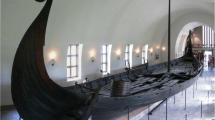Abstract
The problem of deterioration of art works is particularly relevant in countries like Iran that are rich in cultural heritage. According to UNESCO data, Iran holds the tenth rank in a list of countries possessing the highest number of monuments belonging to the world cultural heritage. Archaeological areas, buildings, mosques, statues, museums and objects are all exposed to different biogenic and abiogenic stresses under generally aggressive climatic conditions. Lichens and fungi are known to actively decompose stone surfaces. This process is both physical and chemical in nature and often reaches deep below the stone surfaces. This is caused by chemical and physical interactions of the microbiota with the fluctuating and often drastically changing environmental conditions. Here, we describe and analyze the mainly physical degradation by invading fungal hyphae between stone crystals and a generally destabilizing stone texture. In addition to physical deterioration, organic acids produced by lichens enhance the chemical decomposing processes. In this work, penetration of hyphal bundles as well as individual fungi was studied, and the biodeteriorating patterns were documented and compared to general physical–chemical weathering phenomena. Several strains of aggressive black yeast-like fungi and bacteria were isolated and cultivated and will be described in a taxonomical context with many other isolates from different localities using physiological, morphological and molecular data.



Similar content being viewed by others
References
Adamo, P., & Violante P. (2000). Weathering of rocks and neogenesis of minerals associated with lichen activity. Applied Clay Science, 16(5–6), 229–256.
Aghamiri, R., & Schwartzman D. W. (2002). Weathering rates of bedrock by lichens: A mini watershed study. Chemical Geology, 188(3–4), 249–259.
Bjelland, T., Saebo, L., & Thorseth, I. H. (2002). The occurrence of biomineralization products in four lichen species growing on sandstone in western Norway. Lichenologist, 34, 429–440.
Brady, P. V., Dorn, R. I., Brazel, A. J., Clark, J., Moore, R. B., & Glidewell, T. (1999). Direct measurement of the combined effects of lichen, rainfall, and temperature on silicate weathering. Geochimica Et Cosmochimica Acta, 63(19–20), 3293–3300.
Brock, T., & Madigan, M. (1997). Biology of microorganisms (8th ed.). New Jersey: Prentice-Hall
Bungartz, F., Garvie, L. A. J., & Nash, T. H. (2004). Anatomy of the endolithic Sonoran Desert lichen Verrucaria rubrocincta Breuss: Implications for biodeterioration and biomineralization. Lichenologist, 36, 55–73.
Caneva, G., Gori, E., & Montefinale T. (1995). Biodeterioration of monuments in relation to climatic changes in Rome between 19 and 20th centuries. Science of the Total Environment, 167, 205–214.
Friedmann, E. I. (1980). Endolithic microbial life in hot and cold deserts. Origins of Life and Evolution of the Biosphere, 10(3), 223–235.
Golubic, S., Brent, G., & Lecampio, T. (1970). Scanning electron microscopy of endolithic algae and fungi using a multipurpose casting-embedding technique. Lethaia, 3(2), 203–209.
Gorbushina A. A., Krumbein W. E., & Palinska, K. A. (1999). The phototrophic prokaryotes (pp. 657–664). New York: Kluwer Academic/Plenium.
Jones, D., & Wilson, M. J. (1985). Chemical activity of lichens on mineral surfaces – a review. International Biodeterioration, 21(2), 99–104.
Kondratyeva, I. A., Gorbushina, A. A., & Boikova, A. I. (2006). Biodeterioration of construction materials. Glass Physics and Chemistry, 32(2), 254–256.
Krumbein, W. E. (1969). Über den Einfluß der Mikroflora auf die exogene Dynamik (Verwitterung und Krustenbildung). Geologische Rundschau, 58, 333–363
Krumbein, W. E., & Schönborn-Krumbein, C. E. (1987). Biogene Bauschaden Anamnese, diagnose und Terapie in Bautenshutz und Denkmalpflege. Bautenschutz/Bausanierung, 10, 14–23.
Krumbein, W. E., & Urzi, C. (1991). Biologically induced decay phenomena of antique marbles-some general considerations. The conservation of monuments in the Mediterranean Basin (pp. 219–235).
Lee, M. R., & Parsons, I. (1999). Biomechanical and biochemical weathering of lichen-encrusted granite: Textural controls on organic–mineral interactions and deposition of silica-rich layers. Chemical Geology, 161(4), 385–397.
Nimis, P. L., & Monte, M. (1988). Lichens and monument. Studia Geobotanica, 8, 1–133.
Schneider, J. (1976). Biological and inorganic factors in the destruction of limestone coasts. Contributions to Sedimentology, 6, 1–112.
Spurr, A. R. (1969). A low-viscosity epoxy resin embedding medium for electron microscopy. Journal of Ultrastructure Research, 26(1–2), 31–43.
Sterflinger, K., & Krumbein, W. E. (1997). Dematiaceous fungi as a major agent for biopitting on Mediterranean marbles and limestones. Geomicrobiology Journal, 14(3), 219–230.
Tiano, P., Bianchi, R., & Vannucci, S. (1975). Research on presence of sulfur-cycle bacteria in stone of some historical buildings in florence. Plant and Soil, 43(1), 211–217.
Tomaselli, L. (2003). Biodeterioration processes on inorganic substrata. Coalition, 6(1), 5–9.
Tretiach, M. (2004). Further additions to the Italian lichen flora. Cryptogamie Mycologie, 25(2), 173–183.
Wessels, D. C. J., & Budel, B. (1995). Epilithic and cryptoendolithic cyanobacteria of clarens sandstone cliffs in the golden-gate-highlands-national-park, South-Africa. Botanica Acta, 108(3), 220–226.
Witlach, R. B., & Johnson, R. G. (1974). Methods for staining organic matter in marine sediments. Journal of Sedimentary Petrology, 44, 1310–1312.
Acknowledgement
The financial support of the Science, Research and Technology Ministry of Iran is gratefully acknowledged. I also wish to express my gratitude to Dr. A. A. Gorbushina for technical help and to the EU BIODAM project (http://biodam.biogema.de/index.html) for contribution during this study.
Author information
Authors and Affiliations
Corresponding author
Rights and permissions
About this article
Cite this article
Mohammadi, P., Krumbein, W.E. Biodeterioration of ancient stone materials from the Persepolis monuments (Iran). Aerobiologia 24, 27–33 (2008). https://doi.org/10.1007/s10453-007-9079-6
Received:
Accepted:
Published:
Issue Date:
DOI: https://doi.org/10.1007/s10453-007-9079-6




